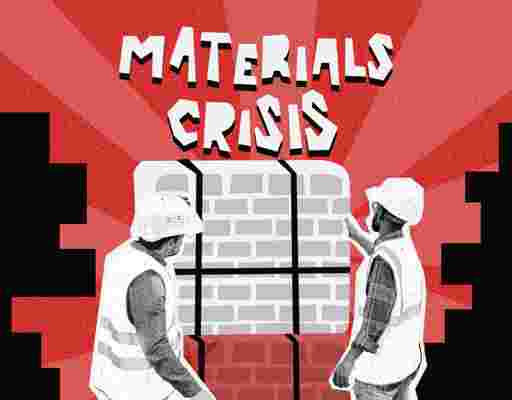April 05,2022
Construction Materials Cost Crisis
by David Stewart
2020 was a big challenge for the construction sector. The sites were closed due to lockdown and almost everybody felt uncertain about their company's future. This period is already behind us, but the long-term consequences of the global pandemic are just starting to impact the industry.

One of the challenges is high prices for raw materials. You can observe the constant growth for the most popular construction components like timber, concrete or metal. Of course, the whole problem is very complex. That is why in today's article, we will try to look at it closer and see the causes and effects of the material crisis in the construction industry. Let's start!
Current Situation on the Market
Analysing the raw material market, we want to focus on the four main groups of materials:
Metal & Steel
Plastics
Timber
Concrete, cement and plaster
Below you can see how the prices in those groups of materials were changing throughout last year.
(Index February 2020= 100). Source:
Do you know why the prices for materials like metal or timber grow much faster than for bricks or concrete?
It is because of the market characteristics. Steel and timber are produced worldwide with buyers from many different countries. Such high supply and demand mean a more competitive market. Also, since materials are made all around the world, such extreme conditions as global pandemic and lockdowns might significantly slow down the supply of goods, thereby causing prices to rise.
On the other hand, we have concrete, cement and bricks. Such materials are much heavier, so their transportation for long distances is not so profitable. That is why the market for these products is smaller, less competitive, and consequently, less susceptible to price changes.
The Reasons behind Construction Materials Crisis
However, instead of analysing specific numbers, let's better focus on understanding what caused such a prominent rise in material costs.
01 Covid-19 and Interrupted Supply Chain
As you probably already know, the first significant factor that caused price growth is the epidemic of Covid-19. During the first months of the pandemic, many construction sites were closed. And the ones that were opened were working but at a much slower pace.
The same situation was on the supply side as companies could not produce materials fast enough or had problems delivering materials due to coronavirus restrictions. It resulted in the supply chain being slowed down or even broken for some time.
02 High demand
Finally, when everything started to work again, the demand began to be extremely high. Everybody wanted to go back to work and compensate for the wasted time of lower productivity. For materials made locally, it was much easier to respond to increased supply.
However, with components like timber or metals, the demand exceeded the processing capacity of suppliers (as some other parts of the world still struggled with a rough Covid situation). As a result, according to economic laws, when demand is higher than supply, the price must always rise.
03 Brexit
Of course, the UK was preparing for Brexit and all associated risks. However, even the best economists could not predict the mix of coronavirus and Brexit consequences on the construction market!
According to the Construction Leadership Council, the UK imported up to 22% of all materials and components. Moreover, 60% of them were produced in the European Union. We can see the apparent reason for price growth when we add a slower supply chain and the restrictions connected with customs clearance. If you want to read more about the impact of Brexit on the industry, check out our other article here.
Prognosis About Future Material Costs
Okay, the prices are pretty high now, but since it is already more than one year from the first lockdown and more and more people are vaccinated, we can expect a drop in prices soon.
Well, unfortunately, the situation is not so stable yet. The demand is still very high. Because of this, the suppliers do not have enough materials and time to fill their inventories and balance the demand and supply side of the market. Unfortunately, according to the prognosis, we will have to wait some time to make that happen. The economists state that concrete, cement, and brick prices might not decrease until the middle of 2022.
Also, another problem is the transportation of materials. It may apply more to materials like timber or metals, but it is still a big issue for the construction industry. The slowed down and disrupted supply chain created shortages of materials and, as a result, higher prices. According to predictions, high values might persist up to the beginning of 2022.
Last but not least, when it comes to metal, we can observe the constant growth of prices, even 75% up over raw steel from August! It is again caused by transportation, slowed down production due to lockdown and high demand from companies. Moreover, the high prices of metal may persist until the following year. The case of metal also draws attention to the need for domestic production of this material. Unfortunately, such changes in the country's economy are never easy, cheap nor fast.
Source:
How Can You Deal with Rising Material Costs?
Do rising prices of construction materials impact your company heavily? Well, undoubtedly, after Covid-19, the raw material crisis might be another big challenge for construction companies. However, like every challenge, it is not unsolvable!
The most important is to have an open approach towards new market conditions and a proper business strategy supported with the right tools. Luckily, it is something we can help you with! Sign up to our blog to be up-to-date with construction tips, trends and best practices and don’t miss our forthcoming article with solutions on how your company can deal with the construction materials crisis!
Sign up!






